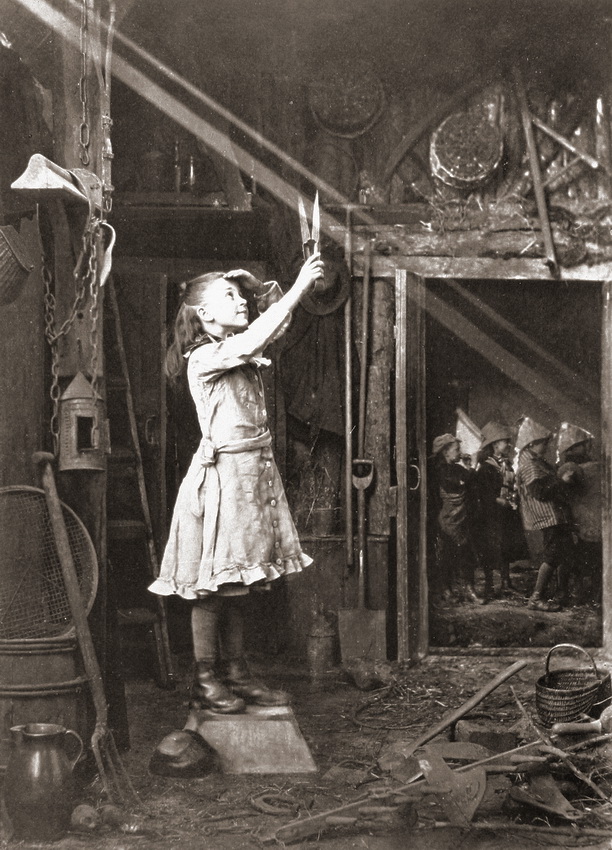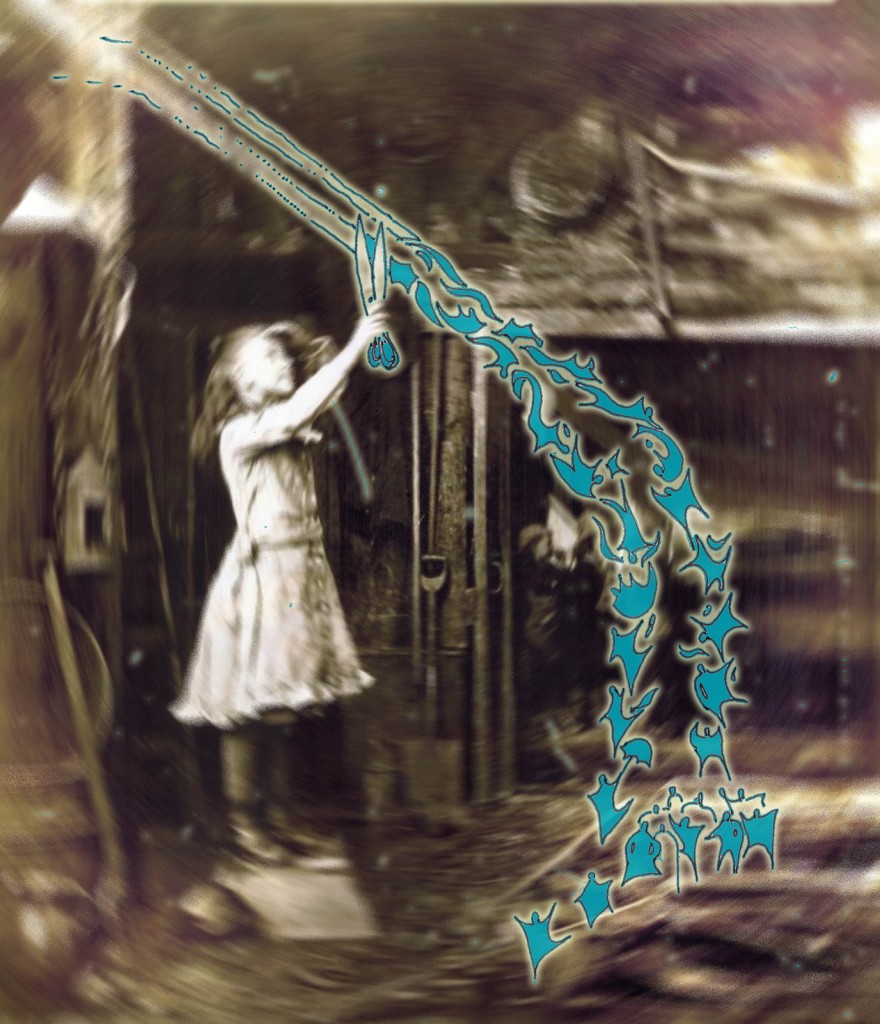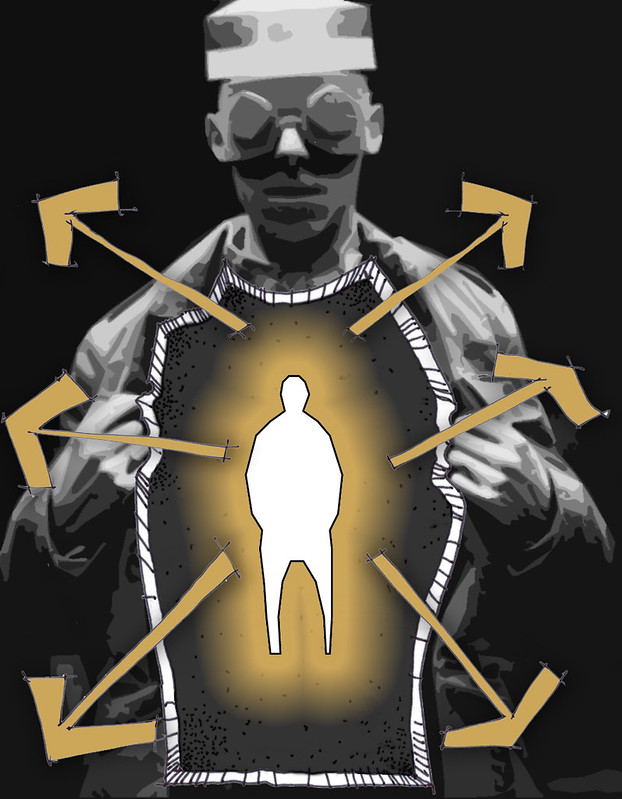Tinkering≠Permission
I had finished, more or less, writing the ebook on mobile learning field activities that I had mentioned and was working with my sister to illustrate the book. We were using a process whereby I would write a short impression of each chapter and what I wanted the illustration for that chapter to encapsulate. I would then choose some representative images that had inspired me or that I thought reflected the impression of that chapter (impression and not necessarily the representation). Then my sister would go off and illustrate that and we would discuss iterations; it is a good collaboration.
So some of the illustrations we were creating were, in essence, remixes of the original works that had inspired me. This is in keeping with the structure and purpose of the ebook, which stresses that composing in mobile spaces is about alignment and intersections of meaning, about repurposing one’s own work and media along with artifacts from the past. The compositions, in short, don’t have to be completely original constructs to be representative of learning. We borrow, tinker, and build to learn. So the learning theory and the illustrations are aligned in that respect.
I then ran headlong into the issue of orphan works and the hunt for that elusive rights holder for older, historical materials. And I can safely say that learning theory and copyright law are not that aligned. One doesn’t enable the other. Orphan works are a massive issue for those of us in this field of digitization (I used to be) and historical research. This process proved so time consuming that I felt it warranted mention in the book. That mention subsequently became a chapter unto itself on how to get teachers and learners engaged in the process of copyright, data and media ownership, privacy, and fair use and all of that. I actually believe it is turning into the most pragmatically useful chapter of the whole book, especially in light of recent events.
Learners need to engage in this process consciously and deliberately, this process of creating, observing, recording, and disseminating, with full awareness of what is being used, who owns it, what rights people have to privacy, etc. There are some fantastic materials available to help learners engage in this reflection that are included in the chapter and that I will outline in a subsequent post, but for now I wanted to stick with the illustrations to demonstrate our process a bit.
Image #1: Adam Diston (1886) and Alignment of Meaning from Space
So in one chapter, we started with this photograph from Adam Diston from 1886. Adam Diston was a Scottish photographer in the late 19th/early 20th century. He has long since deceased and so identifying the rights holder for this image was proving difficult. I had searched through UK copyright law to learn about public domain and when after the creator’s death does copyright expire. The image beautifully captures the playfulness of mobile learning for me, that bending, shaping, aligning of meaning from our environments. It was an impression of mobile learning for me, rather than a pure illustration.

We then remixed it (well, my sister did). The remixed version begins to position mobile learning as a transformation of habitus, which is a big part of the book. It remains to be seen whether or not we will be able to use a later iteration of this remix (we are still discussing and changing it) depending on what my rights research finds, but there remix is below.

Image #2: Testing experimental armor and emergence in mobile learning
The second (of eleven so far) illustration that we were working on was for the chapter on mobile learning as a transformation of habitus, or how what is mobile is the learner’s mindset. So I went looking for an image (recorded on Pinterest) of something that might serve as a base layer or as an impression of that transformation. I was drawn to this photograph, originally found via the wonderful Retronaut, which demonstrates soldiers testing experimental body armor from around World War I. From the Retronaut, I tracked it down back to the Imperial War Museums and am now trying to find the original rights holders and whether this is available for remixing. We went ahead and remixed it anyway, but might not use it depending on the legal restrictions.
The original photograph
And the remixed version designed to demonstrate the transformation in mobile learning. It is an impression rather than an accurate representation, but we both just kind of like it.

There are many more of these examples where my intent to use a historical record is stunted somewhat by legal restrictions (especially as I am perfectly willing to get permission if I can), the kind museums and archives face all too often with orphan works. So we have developed a secondary set of images, created originally by me with my Creative Commons licenses designed explicitly for derivative works. I will include these in the chapter and a subsequent post on how teachers can help their learners engage these issues as they are incredibly important.
